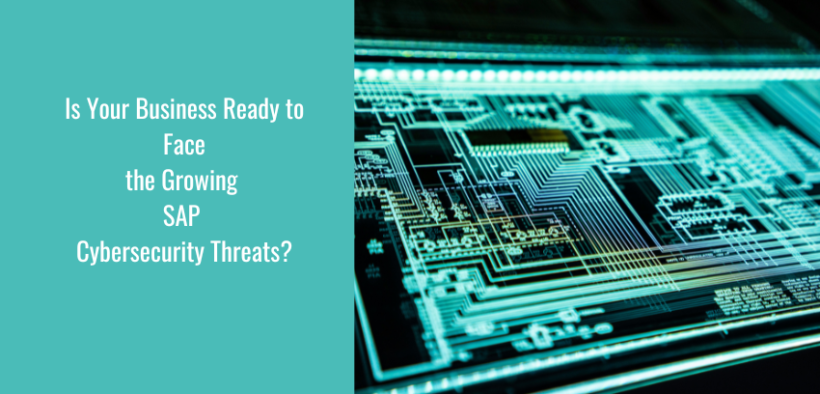SAP Cybersecurity Threats Turn into a Hacker’s Goldmine
Share

As businesses increasingly prioritize efficiency, SAP cybersecurity threats have emerged as a glaring vulnerability, turning SAP systems into a goldmine for hackers. With over 77% of global transaction revenue touching an SAP system, the stakes have never been higher. These systems, powering everything from financial operations to supply chain logistics, are now prime targets for cybercriminals seeking to exploit sensitive business data.
The Rising Threat to SAP Systems
Cybercriminals are evolving, and their focus has shifted toward critical enterprise systems like SAP. Yvan Genuer, a senior security researcher, highlights how SAP systems often lack timely patches, making them an easy target for attackers. A recent study by a leading cybersecurity firm revealed that 64% of SAP applications are exposed to severe vulnerabilities within 72 hours of a patch release. These gaps provide attackers with a window to infiltrate systems, disrupt operations, and exfiltrate valuable data.
Adding to the concern is the growing reliance on cloud-hosted SAP solutions, which Yvan Genuer notes are particularly vulnerable due to inconsistent security practices and reliance on external configurations. While these offer scalability and convenience, they also introduce new challenges in endpoint protection and malware defense. As more businesses adopt these solutions, the potential for ransomware attack prevention and exploitation surges.
A Diverse Array of Threat Actors
SAP systems are under siege from a wide range of attackers. Cybercrime groups such as FIN13 (commonly referred to as “Elephant Beetle”), FIN7, and Cobalt Spider, have specialized in exploiting enterprise systems to siphon off sensitive data and disrupt operations. On the other end of the spectrum, state-sponsored entities like China’s APT10 are leveraging SAP vulnerabilities for strategic advantages, including industrial espionage. Even amateur hackers, or “script kiddies,” are taking advantage of publicly available exploits to target these systems, underscoring the broad appeal of SAP as a target. Their motivations vary, from stealing confidential data to monetizing the extensive transaction volumes SAP systems handle daily.
High Demand for SAP Exploits
The demand for SAP exploits is skyrocketing within underground forums and black markets. Vulnerabilities like CVE-2020-6287 (RECON) and CVE-2020-6207 (a flaw in SAP Solution Manager’s authentication process) have sparked widespread interest among attackers. In 2020, for instance, an exploit targeting SAP Secure Storage was being sold for $25,000, while more sophisticated tools for remote code execution and authentication bypass could fetch as much as $250,000.
Discussions about SAP-specific attack methods have surged by 220% between 2021 and 2023, according to Onapsis. These forums act as a breeding ground for cybercriminals to exchange tactics, including strategies for exploiting SAP’s cloud and web services. This burgeoning black market reveals the persistent interest and growing expertise around SAP exploits, making it critical for businesses to stay vigilant.
Expert Warnings and Recommendations
Independent cybersecurity experts have reinforced these concerns. Chris Morgan, a senior cyber threat intelligence analyst at ReliaQuest, emphasized the vital role SAP systems play in managing sensitive data, from financial transactions to intellectual property. Morgan pointed out that the development of highly technical exploits, such as those targeting SAP Secure Storage, reflects the significant expertise of attackers, which also explains their high price tags on underground markets.
ReliaQuest’s research uncovered a 2020 exploit being marketed for $25,000. This exploit reportedly enabled attackers to perform lateral movements within SAP environments by uncovering credentials, elevating privileges, and compromising additional systems. These capabilities highlight the need for organizations to bolster their defenses against such advanced threats.
The Consequences of Ignoring the Threat
The consequences of SAP cybersecurity breaches are far-reaching. Hackers often deploy advanced malware defense bypass tools to gain unauthorized access to sensitive corporate data, including financial records, intellectual property, and employee details. In 2024 alone, cyberattacks on enterprise systems increased by 38%, with SAP platforms accounting for a significant portion of these incidents.
The financial toll is staggering. Businesses targeted in ransomware attacks typically experience an average downtime of 16 days and losses exceeding $4.5 million per incident. Beyond the monetary impact, reputational damage can cripple organizations, eroding customer trust and investor confidence.
Small and medium-sized businesses are particularly vulnerable due to limited resources for advanced ransomware security and monitoring. A single breach could spell disaster, making proactive measures non-negotiable.
Strengthening SAP Cybersecurity
To combat these threats, organizations must prioritize robust ransomware protection and implement proactive strategies. Here are key measures to consider:
- Regular Patching and Updates: Ensure that SAP applications are consistently updated to close security gaps. Automated patch management tools can significantly reduce vulnerabilities.
- Comprehensive Endpoint Protection: Deploy advanced endpoint security solutions to defend against malware and unauthorized access attempts.
- Real-Time Monitoring: Utilize continuous monitoring tools to detect unusual activities and mitigate risks before they escalate.
- Employee Training: Equip your workforce with cybersecurity awareness, particularly regarding phishing attacks that often target SAP credentials.
- Third-Party Assessments: Engage cybersecurity experts to conduct regular audits, ensuring your defenses are up to date and compliant with industry standards.
The Importance of Preparedness
In an era of heightened cyber risks, SAP cybersecurity must be a priority for businesses of all sizes. By adopting cutting-edge cybersecurity software and fostering a culture of vigilance, organizations can mitigate risks and safeguard their operations. As the saying goes, prevention is better than cure—especially when the stakes include the very backbone of your enterprise.
The goldmine of business data housed within SAP systems demands fortification. Don’t wait for a breach to act. Prioritize ransomware attack prevention and stay ahead of evolving threats to ensure your business thrives in a secure digital landscape.
References
Cybercrime To Cost The World $10.5 Trillion Annually By 2025
Ransomware The True Cost to Business 2024 | Report
SAP systems increasingly targeted by cyber attackers | CSO Online











Woh I like your blog posts, bookmarked! .